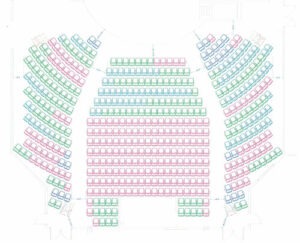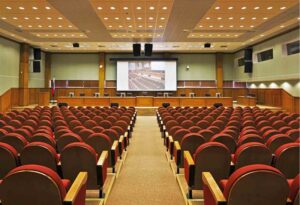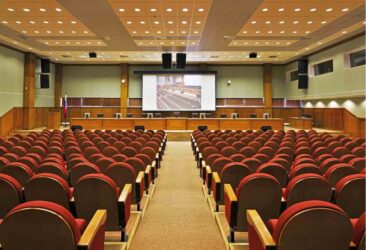Seat Spacing: Building Code Considerations for Audience Seating
 Introduction
Introduction
Building codes play a vital role in ensuring the safety and comfort of individuals within audience seating spaces. One critical aspect of these codes is seat spacing, which determines the distance between rows of seats. We will investigate the significance of seat spacing and the building code considerations associated with it.
The Significance of Seat Spacing
Proper seat spacing is essential for the following reasons:
Comfort and Accessibility:
- Sufficient legroom between rows allows audience members to sit and move comfortably.
- Inadequate seat spacing can lead to cramped conditions, making it challenging for individuals to enter or exit their seats.
Crowd Management:
- Ample space between rows helps prevent overcrowding and allows for efficient movement within the seating area.
- It facilitates crowd management during peak periods, such as intermissions or emergencies.
 Building Code Considerations
Building Code Considerations
Building codes provide guidelines and regulations regarding seat spacing in audience spaces for seats. Here are some key considerations:
Minimum and Maximum Spacing:
- Building codes typically specify the minimum and maximum allowable seat spacing.
- The minimum spacing ensures that individuals have sufficient legroom, while the maximum spacing prevents excessive gaps that may compromise safety or lead to inefficient space utilization.
Occupant Load Factor:
- The occupant load factor, as determined by building codes, helps determine the number of seats and the spacing required.
- It takes into account factors such as the intended use of the space, the type of event, and the maximum capacity of the venue.
Sightlines and Clear Views:
- Building codes often address sightlines and clear views for audience members.
- Seat spacing should be designed in a way that allows unobstructed views of the performance or event from every seat in the venue.
Accessibility:
- Building codes, including accessibility standards such as the Americans with Disabilities Act (ADA), may have specific requirements for wheelchair spaces and companion seating.
- These provisions ensure that individuals with disabilities have equal access to areas for seats and can maneuver comfortably within the space.
 Compliance and Safety
Compliance and Safety
Adhering to seat spacing regulations outlined in building codes is crucial to maintaining safety and compliance. Not conforming to these guidelines can have serious consequences, including compromised safety during emergencies or legal ramifications for venue owners.
Conclusion
Seat spacing is a critical aspect of building codes that must be carefully considered when designing audience seating spaces. Proper seat spacing ensures the comfort and accessibility of individuals, facilitates crowd management, and enhances the overall experience of the audience. By following the guidelines and regulations outlined in building codes, venue owners and architects can create safe, compliant, and enjoyable seating environments for a wide range of events and performances.






